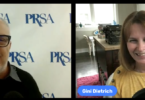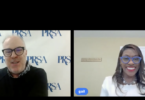As 2010 comes to a close, I look back and reflect on a year that changed how the National Education Association (NEA) and other national advocacy organizations manage their public relations. For NEA, three key events changed how we manage advocacy communication: passage of health care reform legislation (a win for NEA and its members) and the education jobs bill (meant to save more than 200,000 educators’ jobs), and the effects of the midterm elections.
For public relations professionals, what’s important about these events — health care reform, the jobs bill and the election — is how public relations demonstrated its value as part of a national member-driven advocacy campaign.
Public relations could be at the right place at the right time as we head into 2011. The “wild, wild west” of communication — social media — gives public relations professionals, the “cowboys and sheriffs,” a huge opportunity to earn respect and demonstrate value in the new communication frontier.
A couple on-the job examples to illustrate my point:
Facebook Advocacy
For membership-driven organizations, it’s well known that the most powerful spokesperson is the member. For NEA, an “Education Votes” website and a “Speak Up for Kids and Education” Facebook page allowed us the put our members — mostly teachers and education-support professionals — front and center. Our social media also captured real-time, face-to-face communication from educators to members of Congress, demonstrating how social media can enhance face-to-face communication.
Several times each year, NEA members and leaders make Capitol Hill visits to (“lobby”) their members of Congress. In the old days, the visits were fairly private one-on-one meetings. Now, within minutes of leaving the Hill, teachers, as well as Hill communicators, Tweet and update their Facebook pages to report that the meeting took place and what they talked about. We show our leaders and members in action, and have them tell the story in their own words through online video.
While the Hill visit is itself important, the conversation leading up to, and immediately following the meeting, using social media, is even more powerful. In some ways, this act of communication is more important than the event itself.
“What’s on Fire?!” Stories From the War Room
Early in 2010, NEA integrated a core team of GR (government relations), public relations, field organization and policy experts by starting a “war room.” (Its name was later changed to “campaign room” to be less war-like.) The war room was a quick response, crisis du jour unit within the larger NEA organization. Each day began with a meeting with the first agenda item being the question “What’s on fire today?!”
Something interesting happened along the way — our public relations related to the jobs bill and other “campaigns” was more integrated, nimble and effective. Also, for the first time in years, staff in departments outside of public relations learned what we really do on a daily basis. Aside from the inconvenience of working in the war room, the staff was motivated by the ability to focus on a concentrated campaign, with new challenges, creativity and teamwork each day.
Shorter Than Short-Term Planning
So what’s ahead? I would remiss if I didn’t spend some time forecasting the future of advocacy communication in 2011. Remember the good old days of public relations planning when a six-month, 12-month and two-year plans were developed? Now, it’s more about six days, 12 days and two weeks. Thanks to the 24/7 nature of websites, blogs, social media and their integration with each other, it can be difficult to look into the future; however, long-term planning is still necessary. Not everything is a legislative battle requiring a “war room.”
GR and PR
My final story comes from an epiphany that a seasoned NEA government relations professional and successful organizer had on election night. “PR is now more important than GR,” he said to my dismay. I wasn’t sure I heard him right. “With social media, along with the news media, and the rapid pace of communication 24/7, PR is now more important than ever. The rules have all changed. Traditional GR is not enough.” With that said, I smiled and thought “2010 has been a very good year for public relations.”
RELATED: PRNewser podcast interview featuring Steve Grant (from Dec. 2, 2010)
Steven Grant, APR, serves on the PRSA Board of Directors and is senior manager of public relations for the National Education Association.







[…] also serves as a PRSA board member, who just published a column on the organization’s site about advocacy. Click below for his conversation with […]